mozart 40, last movement no 1
Every serious bass player will know this one. In my view its one of the harder
excerpts in the repertoire, if not the hardest. I play it like this:-
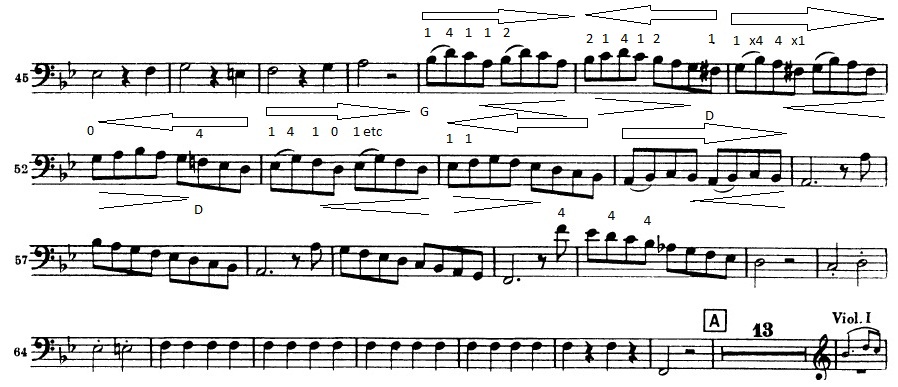
Fig 1a - my version, bar 49
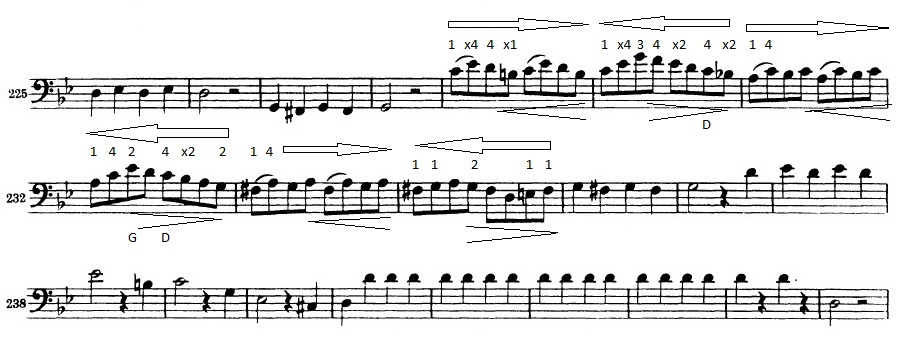
Fig 1b - my version, bar 229
And my video clip is:-
Mozart40LastMov
There are a number of versions in the literature, including:-
IMC Orchestral Excerpts (Fred Zimmerman), Vol I, p12 - has the
notes, but no clues as to the all important fingerings
Ludwig Streicher, My way of playing the double bass vol 3, p23-24
- goes for the string crossing option

Fig 2a Streicher version bar 49
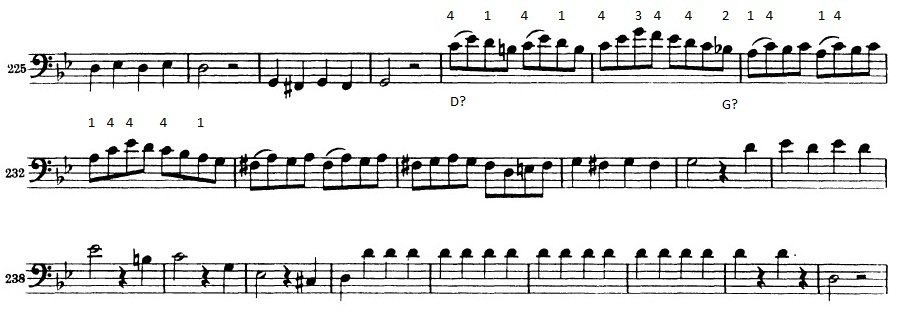
Fig 2b Streicher version bar 229
Owen Lee tutorial in The Double Bassist - this is a fantastic
article, a must read for any serious bass player with an audition looming. Lee
opts for the thumb on the D string option:-
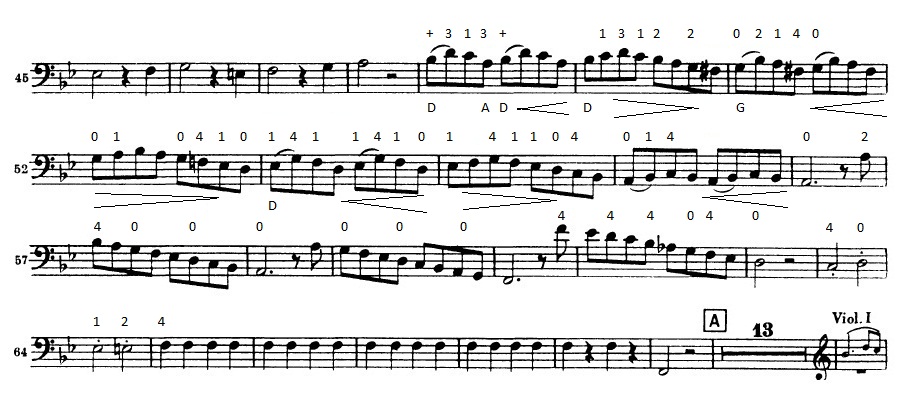
Fig 3a Owen Lee version bar 49
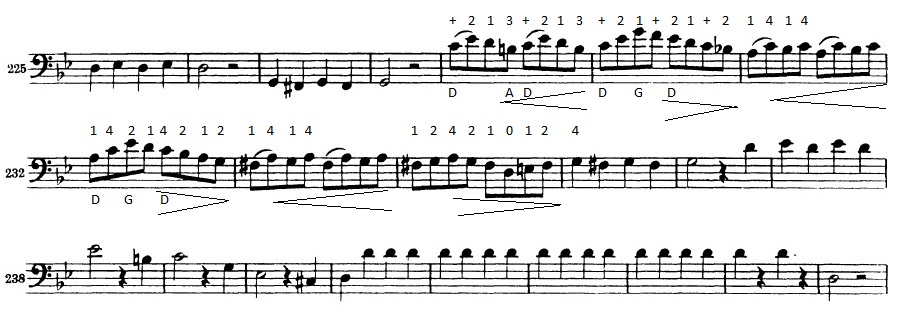
Fig 3b Owen Lee version bar 229
And there are many variations on the three options above.
There are a number of issues the player needs to consider before deciding on how
to play this passage:-
1 string crossing vs shifts. This is a dilemma we face with all
the time as bass players and is a huge issue with this passage. When given the
choice I would generally prefer to shift than cross strings, especially slurs at
fast tempi
2 extended fingering vs conventional 1-2-4. I play a number of
passages in 3rd and 4th positions and as I have a big hand I stretch the minor
3rds to avoid a shift or a string crossing. The reason I play them in that
position is that the hand shape is smaller than in 1st position and therefore
the extended fingering is an option that works for me
3 bow stroke - how off the string should it be? I think that at
the proper tempo it is very dangerous to have the bow flying around too much. I
follow Lee's advice of using a sautille stroke for the bars with 8 quavers (eg
bar 2, 4, 6 etc) but move more on the string for the bars with slurs (bars 1, 3,
5 etc).
How to prepare (long term) - Lee talks about practicing this
daily, for 20 years! It is not the passage you can pick up in the mail and play
in an audition two weeks later - I think it has to be under the fingers all the
time. I work on this daily, slowly, as an exercise in mobility. Before
practicing it, at minim = 84 I do these exercises to get the rhythm in my head,
and RH.

Fig 4 articulation exercises
This passage is not just a RH passage - the articulation is very difficult to
keep in time in the slurred bars (1, 3, 5, etc) and it is difficult to switch
from on the string (bar 1) to sautille (2) and back to on (3 etc) and keep in
time
Practice with the metronome until it is perfect a slower tempo. I sometimes have
to break it down into 2 bar chunks to be repeated, for example bars 49-50
(changing to last note of 50 to an A, to make it easier to loop), 51-52 etc.
Lee marks the music in two bar phrases, the 1st leading to 2nd, the 3rd to the
4th etc. It is important to make music out of this passage - achieving the
daunting technical challenges alone will only leave the listener with just a
stream of notes. But Lee's approach is very clever in my view - I have to resist
my natural tendancy to drag bar 1 and rush bar 2. Playing a cresc in bar 1 and a
dim in bar 2 will naturally help counterbalance those tendancies - well it works
for me.
How to prepare (short term, in the audition warm up room) - I
do a shortened version of the Long Term prep. Warm up, get the metronome out and
set to something like minim = 100, do the exercise fig 4, run the passage, fix
errors, get it right at your tempo, increase the metronome marking...
What is being tested - just about everything! Rhythm,
flexibility and mobility, articulation, shifting, musicianship
Notes written on the part - I put reminders to myself to read
in the audition just before I play:-
Arrow forward, dont drag (bars 1, 3, 5, etc) and hairpin up thro these bars
Arrow back, dont rush (bars 2, 4, 6, etc) and hairpin down thro these bars
Short bows
Keep bow close to G and D string to make strings crossings easier
Relax and breathe
Extension - closed
Tempo - Lee suggests 120-126 and he makes the excellent point
that it is better to be solid, in a slightly slower tempo than do crash and burn
at a quicker one. I play this at 120.
Rhythm - difficult, and not just the quavers. It is very easy
to get the latter parts wrong, such as quaver into bar 9, the minims at 15 and
the crochets at 17. Keep that pulse, two (I think in 2 al though Lee recommends
4) in a bar in your head
Bow control - small bows, practice the two strokes, and the
exercise Fig 4